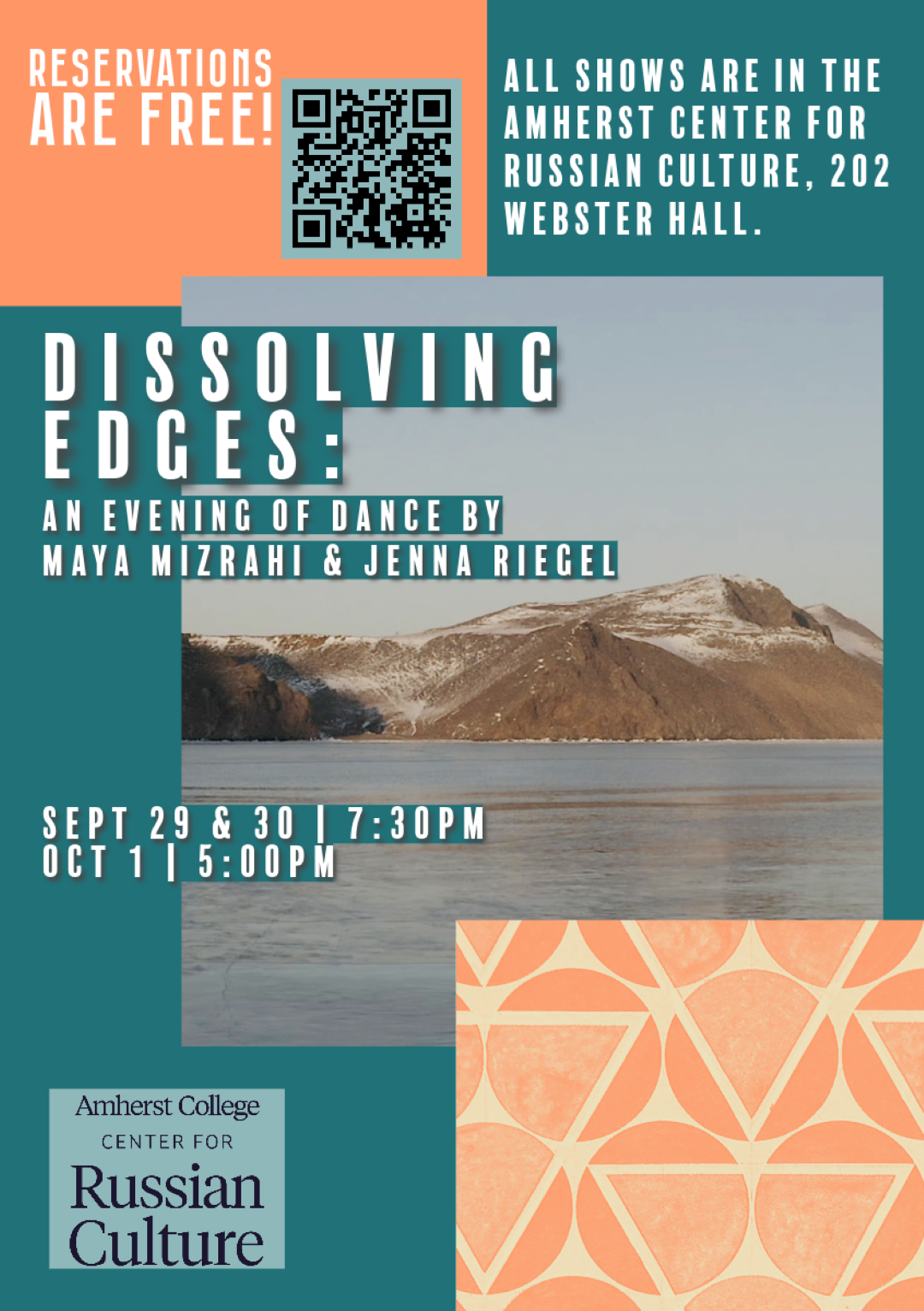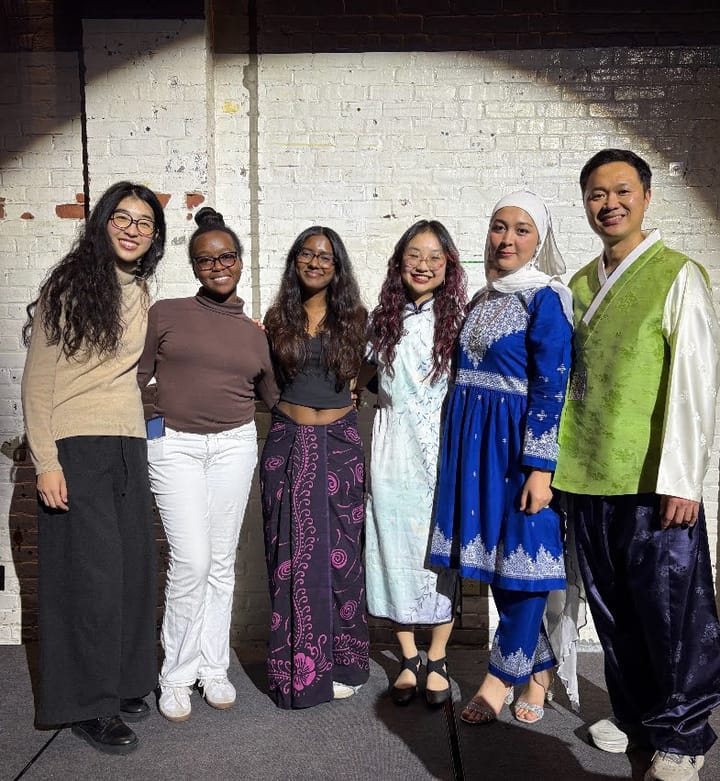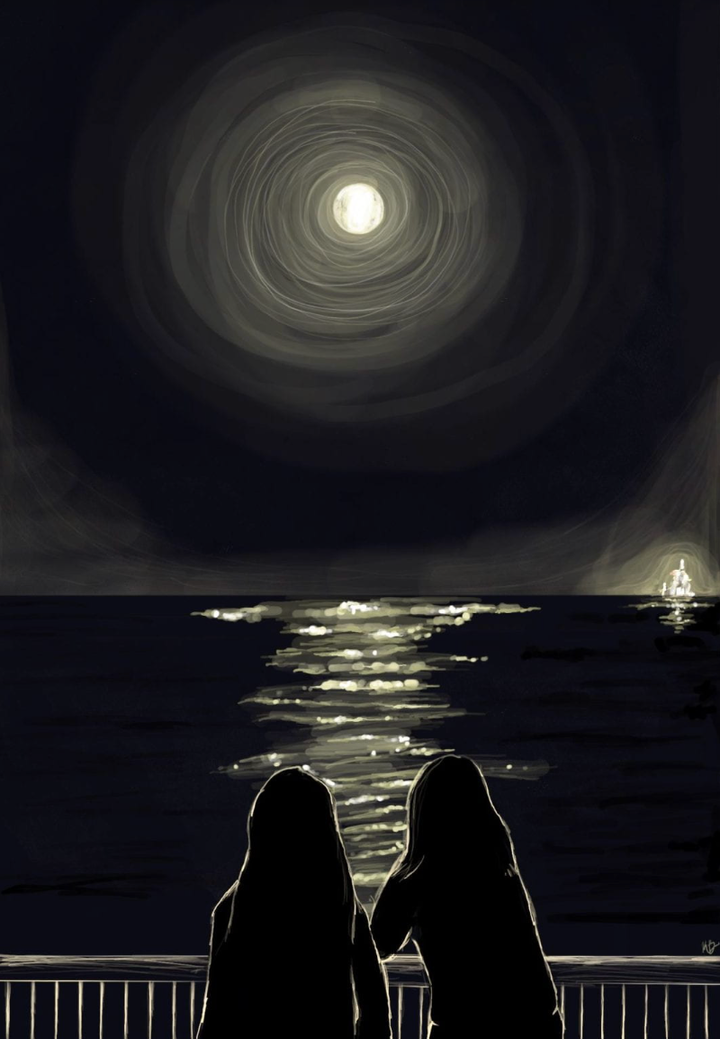A Night of Dance in the Center for Russian Culture
The renovated Center for Russian Culture opened with an evening of dance. Lauren Siegel ’27 reviews the performances, exploring the creative processes of choreographers Maya Mizrahi ’21 and Assistant Professor of Theater and Dance Jenna Riegel.

This past weekend, “Dissolving Edges: An Evening of Dance by Maya Mizrahi & Jenna Riegel” premiered in the college’s Center for Russian Culture, located in Webster Hall. A beautiful two-floor rotunda lined from floor to ceiling with rare manuscripts and artifacts, this enchanting location served as the stage for two unique dance performances, presented from Sept. 29 through Oct. 1. The first piece was an excerpt from “Varvara,” choreographed and performed by Assistant Professor of Theater and Dance Jenna Riegel. The second piece was “Thaw,” choreographed by Amherst alum Maya Mizrahi ’21 and performed by five dancers from across the Five College Consortium, including Sienna Jessurun, Mount Holyoke College ’20; Maya LaLiberte, Smith College ’18; Chloe London, a Smith MFA graduate and lecturer in dance at UMass Amherst; Yang Sun ’24; and Warren Wang ’27.
“Vavara” is a response to Russian photographer Alexander Rodchenko’s 1922 photograph “Performing Furniture,” currently on display at the Mead Art Museum. The subject of the photo is Varvara Stepanova, a prominent Russian Constructivist artist and Rodchenko’s life partner. Riegel used Stepanova’s work to inspire her piece both in form and theme. Employing a mix of both machine-like and organic motions, her movement explored the Constructivist view that humans are actually mechanical. Riegel’s performance also adopted the imaginative notion that she was Vavara in a past life, exploring the crossover between their lives and the eventual emergence of Riegel’s individual identity.
“Thaw,” on the other hand, was symbolically inspired by Lake Baikal — a massive, ancient lake located in the heart of Siberia. The range of movement styles of the five dancers — from rigid to beautifully fluid — reflected the lake’s undefined borders, given the freezing and thawing of its waters throughout the seasons and its location in Siberia. Historically, the lake’s borders have been more clearly defined by culture and history than by any political measures. Despite their differences, both dances explored the theme of dissolving edges through inventive choreography and dynamic sound scores, prompting thought-provoking commentary about different aspects of Russian culture in the process.
“This was really exciting for me, especially because the space itself is so inspirational,” Mizrahi said of her experience choreographing “Thaw.” She added, “Coming back here after having been gone for two years has honestly been an amazing experience.” Michael Kunichika, director of the Amherst Center for Russian Culture and a professor of Russian, was Mizrahi’s interdisciplinary thesis advisor during her senior year at Amherst. She was thrilled when he invited her back to hold this artistic residency and create “Thaw” to help celebrate the Center for Russian Culture.
For Mizrahi, who currently lives in Tel Aviv, the piece came together in a very short amount of time, unlike “Varvara,” which Riegel has been working on since 2019. “I got here Sept. 1 and I’m leaving Oct. 2, so it really has been one solid month,” explained Mizrahi. “But I also started work on the project a little bit before I flew here.”
Before coming to Amherst, Mizrahi started work on her sound score, partially inspired by percussionist sounds of the Buryat peoples who have worshiped at Lake Baikal’s shores for centuries. She worked with Jake Meginsky, a musician, filmmaker, percussionist and dancer at Smith. The score, which ranges from drums and strings to drone sounds and noise of ice cracking, reflects the juxtaposition between the frozen and thawed states of Lake Baikal itself. These shifts were doubly expressed by the dancers as they embraced different styles of movement.
“I was really inspired by the dancers themselves,” Mizrahi said of her choreography process. “Warren, Yang, and Sienna all have these very powerful popping and breaking technique styles which I used in the beginning of the piece. And then towards the end, we start to use the fluidity and release that Chloe and Maya are really amazing at.”
Riegel’s sound score flowed in a similar manner, switching from Vavara’s spoken voice to sounds of mechanization to contemporary pop music in order to mirror the transformation from Vavara’s mechanistic perception of the body to Riegel’s more human understanding.
Both choreographers utilized the unique geography of the Russian Center to their advantage, projecting images and videos on the ceiling and having dancers perform on the balcony as well as the main floor. In “Vavara,” Riegel also utilized props and clothing as part of her performance, recreating one of Vavara’s set designs and reimagining her costumes. She placed these outfits on the floor and changed into different ensembles mid-dance, reflecting her shifting themes as the piece progressed.
In “Thaw,” Mizrahi projected actual footage of Lake Baikal on the ceiling. “I have a friend who grew up in Siberia named Ruslan Nepalec who’s a videographer,” Mizrahi explained. “He lived around the lake and he collected all of this amazing footage of it over the years in changing seasons. You can see how it goes from this frozen state where the ice is so strong you can drive a truck over it to this gorgeous lake covered with flora and fauna in the summer.”
Upon her return to Amherst, Mizrahi has noticed some changes, both in the Amherst dance community and in her own outlook as a choreographer.
“I think that what’s really awesome is that there's a lot more collaboration among the Five College dance community, especially at Amherst,” Mizrhai said. “Just allowing yourself to be open, to be inspired by the dancers, musicians, and the people you’re working with in general is a really good thing.”
This advice of openness and fluidity is something that all members of the Amherst community can appreciate, dancers or not. Just as the theme of dissolving edges itself asserts, great creative and collaborative achievements are only possible if we commit to open-mindedness, take risks, and work to thaw the barriers that divide and limit us.
“Dissolving Edges” was an incredible showcase of creative ingenuity; an amazing way to not only celebrate the Center for Russian Culture through a poignant central theme but also to display the amazing artistic talent and spirit present at Amherst and the Five Colleges. Experience this beautiful, inspiring space for yourself by visiting the Center for Russian Culture.





Comments ()